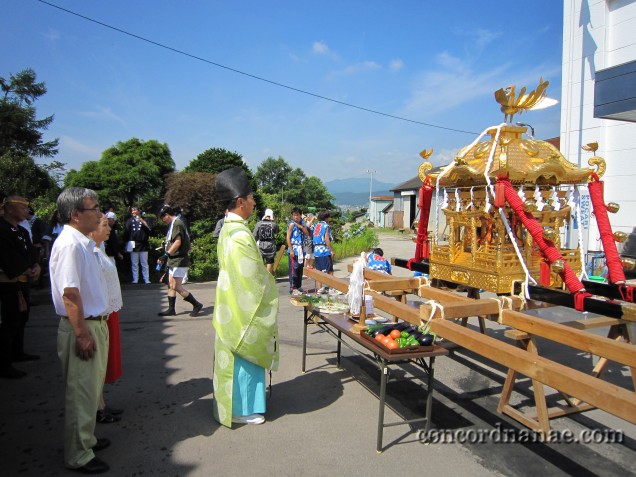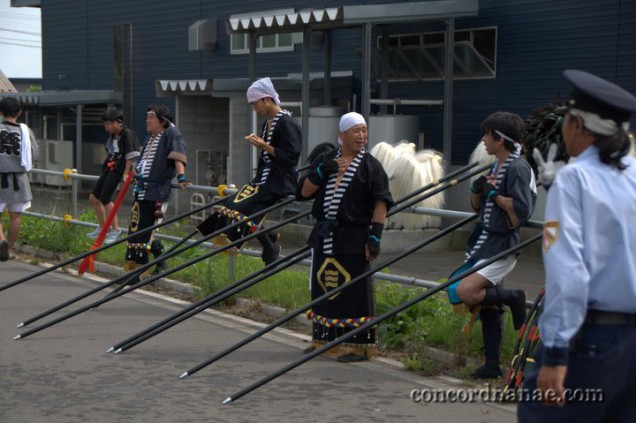
By Ben Mirin, CIR
August 8th, 2011
Nanae’s new Assistant Language Teacher (ALT) and Concord native Ben Haydock arrived sweaty and exhausted at Hakodate airport on July 28th. He had a full week of festivities for the Hakodate Port Festival to look forward to, but his true initiation as a member of the Nanae community would not come until the following week.
Five hundred pounds, dripping with golden chains and clamoring bells, Nanae’s O-Mikoshi (mobile shrine) emerges from the stores of Nanae’s Mishima Shrine only once a year, on the shoulders of two-dozen men. At 7:30am on August 8th, Ben and I suited up in traditional happi robes and joined twenty other local volunteers to carry this cherished relic up and down the streets of Nanae for the town’s annual Summer Festival.
“After dancing the Ika Odori (squid dance) in the Hakodate Port Festival, I didn’t entirely know what to expect from Nanae the following week “ Ben said.
“I knew we would be carrying something heavy, but it wasn’t until we started down the street, with the O-Mikoshi in tow, that I realized my role in this festival was more as a laborer than as a carefree festival goer.”
O-Mikoshi all over Japan travel annually among the neighborhoods that worship at the Shinto shrines where they are kept year round. They serve as vehicles for particular Japanese Shinto deities, traditionally believed to reside in the principle shrines themselves. As they are bourn along the avenues of their respective districts, the O-Mikoshi spread good fortune to deferential residents who emerge from their homes and shops to pray and offer donations that support the festival for the following year.

That day our task was to cover all of Honcho, a district in Nanae that proved far larger than either Ben or I had imagined. At eight o’clock sharp, we shuffled into place around the O-Mikoshi’s wooden supports and prepared to march as five pairs of Yakko, or fan-bearers, took their places at the front of the procession. They carried long staves capped with masses of decorative feathers. Two by two they stepped forward and, swooping down to a crouch, swung these ornaments low over the ground with choreographed precision. They were clearing a path for our shrine to travel.

The last of the Yakko moved off, repeating their ritual every few meters. The veteran marchers began shaking the O-Mikoshi enthusiastically to set the mood for the festive procession. This continued for several minutes until a shout came from the front of the group. As one we hoisted the O-Mikoshi over our heads and marched forward from beneath the shade of Mishima’s iconic curving rooftop. Continue reading “Nanae’s Summer Festival: Carrying the O-Mikoshi”


